
Indie game devs and pixel art are a match made in Switch heaven. We've certainly had some standouts over the years, including the recent Keep Driving, but Bionic Bay is something a little different – grandiose with a nod to past games but timeless in its own art direction.
In an indie game scene awash with retro homages and pixelated throwbacks, Bionic Bay stands apart as something unique. Made in game development software Unity, the game blends physics-based animation with epic pixel art vistas.
Developed by a small tight-knit team based in different corners of the world – Juhana Myllys (Mureena) in Finland and Taiwanese indie game dev Psychoflow Studio – Bionic Bay does some surprising things with pixel art, animation and a painterly, almost cinematic quality.

"I’ve always had this mentality of making games that don’t look like games," says Juhana, Bionic Bay's artist. "Not because games look bad, but because I want to make something unique, something timeless."
The result is a painterly sci-fi world that doesn't cling to the safety net of pure nostalgia, like so many other pixel art games. While many 2D indie platform games lean into the 8-bit aesthetic of the best '80s games, Juhana approached Bionic Bay differently.
Drawing inspiration from cinema as much as classic platform games from Oddworld to Flashback, Juhana tells me famed cinematographer Roger Deakins – particularly his work on Blade Runner 2049 – has been a major influence on the game's art style.
"The colour palette, the use of shadows and lighting – those left a strong impact," says Juhana.

Bionic Bay reimagines pixel art
Development on Bionic Bay began in 2019 and Juhana tells me he "hadn't touched pixel art in nearly a decade" before starting on the game. Returning to pixel art, Juhana says he sort to being something new to the medium, to modernise the art style without losing the raw edge associated with the retro art form.
Instead of the hard-edged limitations of 8-bit pixel art Juhana worked with a broader colour palette for Bionic Bay – working with eight ten colours in a scene – along with a more fluid approach that blends the feel traditional painting with the precision associated with pixel art.
"There are still a lot of games doing pixel art,” he says, “but I felt like many of them were looking too much to the past. I wanted something between painting and pixel art."

Achieving the art style for the game wasn't an instant success. Juhana explains it took a couple of months of "trial and error" while experimenting with brush sizes, zoom levels and colour layering before Bionic Bay's distinctive look was settled upon.
The game mixes mechanical designs, such as large industrial sci-fi machinery, with organic alien scenery. Juhana offers an insight into his process, revealing the complex mechanicals demanded planning while alien trees and plants could be painted freely.
"I use Photoshop and a Wacom Cintiq tablet," he explains, adding: "I usually have three windows open – one at 100% pixel view and one at 600-700% so I can paint close up. I treat it the same way I’d approach traditional sketching or painting."
(Read our guide to the best drawing tablets to read up on Wacom and its competitors.)
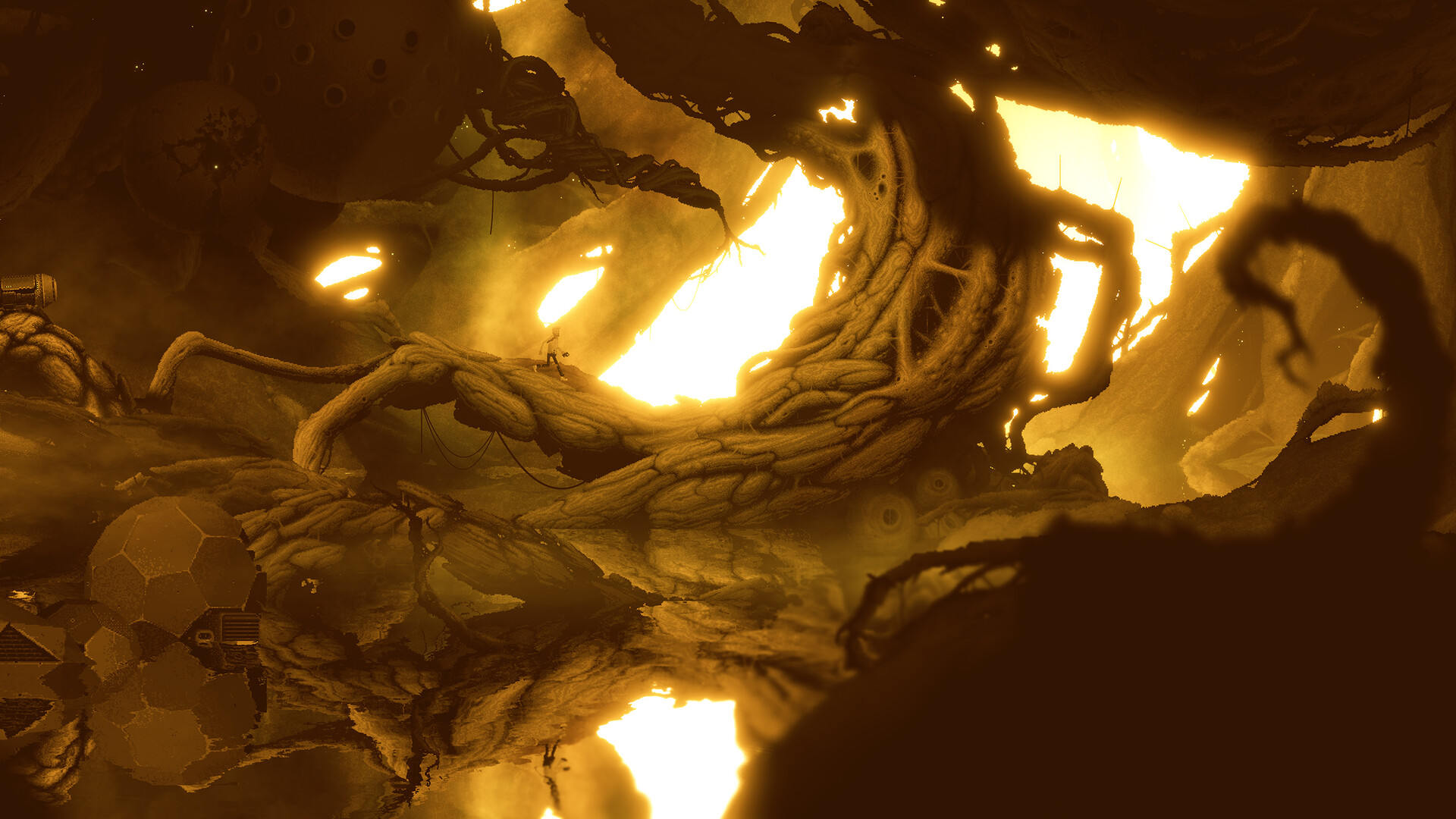
Crafting animation with character
Though visually arresting, Bionic Bay's art isn't just there to look good – it moves, it zooms, it pans and animates. Juhana is behind the art and design, while Xiao-Fong Huang and Kevin Lai from Psychoflow in Taipei look after the programming in Unity, together they've created a unique physics-based platformer.
While the Bionic Bay features physics-based game design, the animation is hand-keyed and expressive. The scale and motion of the game was made richer by a mid-production decision to double the size of the character.
"Originally, the player character was tiny," Juhana says. "It gave this cool sense of scale, but it limited everything – from camera work to the ability to show facial expression."
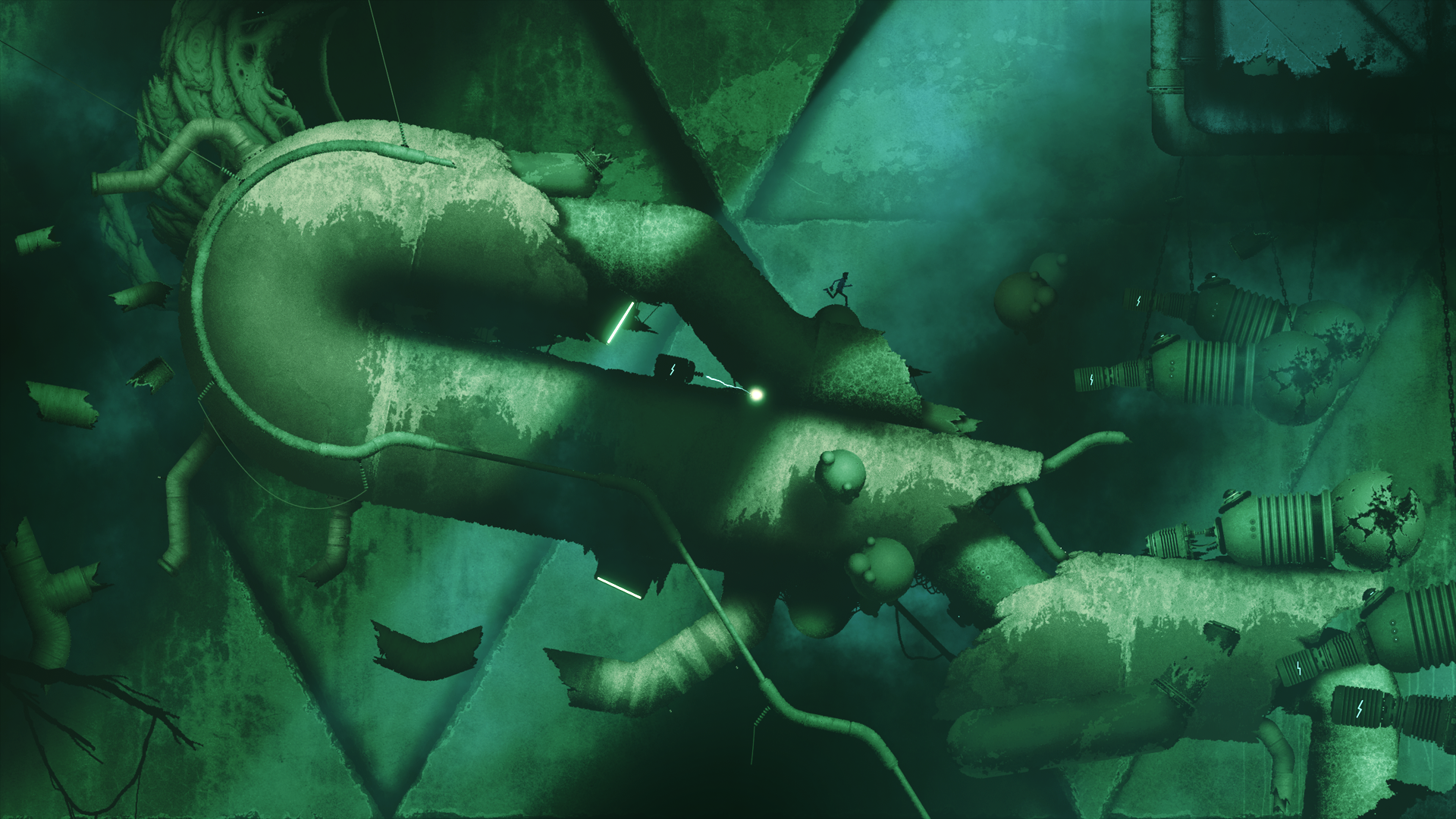
Suddenly we could give him more personality. His movement felt better. The game instantly felt more alive
Juhana Myllys, creator and founder Mureena
The team had already built a lot of the game around the small, flea-like character size, so changing the hero's design meant reworking substantial parts of the game.
"Suddenly we could give him more personality. His movement felt better. The game instantly felt more alive," says the artist.
Why the sudden change? This came about after Juhana watched a "depressing livestream" of someone playing an early demo build of the game.
"It was horrible," he admits Juhana, brushing a hand across his head and smiling. "The guy hated it. And watching that helped me realise – you can’t be afraid of change. If you are, you’re not creative anymore."
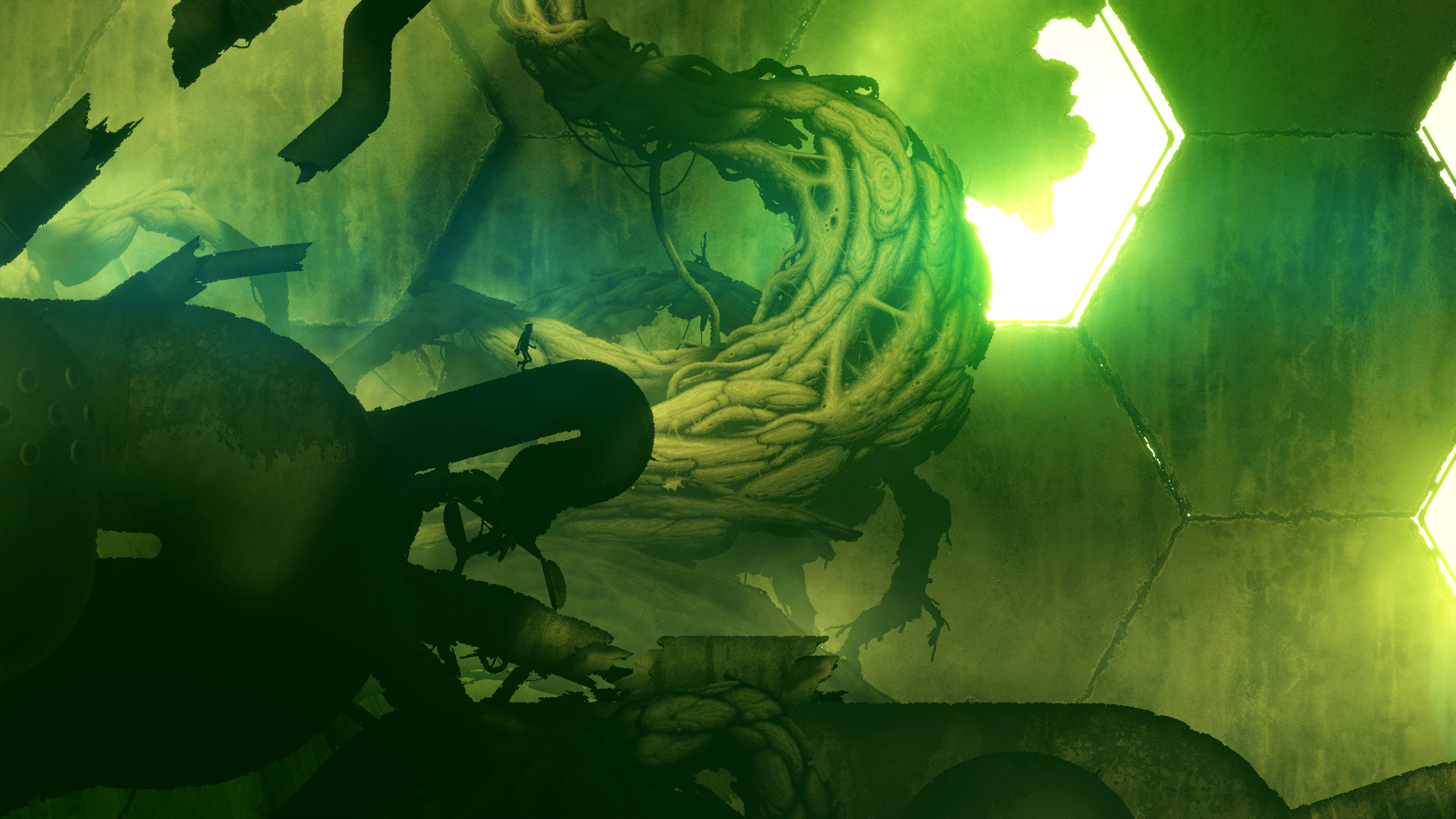
Bionic Bay is built on surprise
After a moment of thought, Juhana tells me the game's design philosophy is based around a sense of unpredictability.
"The part I’m most proud of is that the game never stops throwing new stuff at you," Juhana says. "There are no filler moments. No recycled ideas. I want players to feel like anything can happen."
The idea behind Bionic Bay is to constantly evolve the world and how players will experience the adventure. Over 10-12 hours of platforming, puzzle-solving and physics-based experimentation, Juhana tells me gameplay and visual design constantly evolves and never settles into repetition.
The scope for variety and agility to alter the game's design comes down to Bionic Bay's indie dev credentials. The team of three is flexible and open to change. "It's easier to steer a small ship. We can make big changes fast, without bureaucracy," shares Juhana.
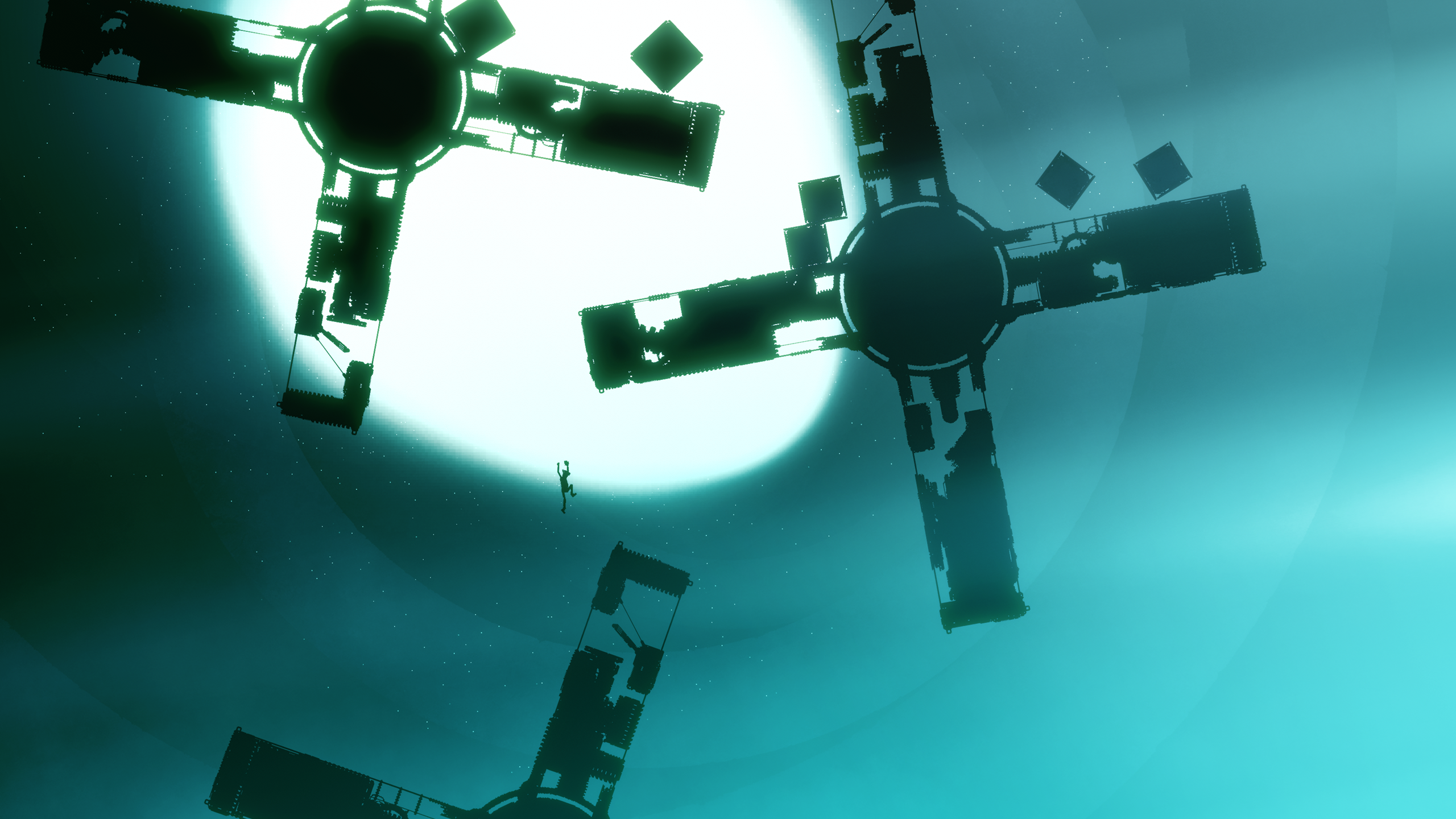
A game that doesn't repeat itself
This flexibility in its approach to art and design means Bionic Bay doesn't look or feel like too many other pixel art platformers. This is, of course, by design.
As previously touch upon, Bionic Bay draws on cinema as much and other video games and makes use of digital tools to push a pixel art style that feels modern while playing on our nostalgia.
But the art direction refuses to settle for the "just good enough" approach of other pixel art games.
For Juhana, the visual design of Bionic Bay is the culmination of years of trial and error, iterating on an idea, and the stubborn ambition keep pushing for perfection.
"We never stopped being creative," he says. "That's the thing I'm most proud of; we could probably keep going forever, but I'm glad we didn't run out of ideas before finishing."
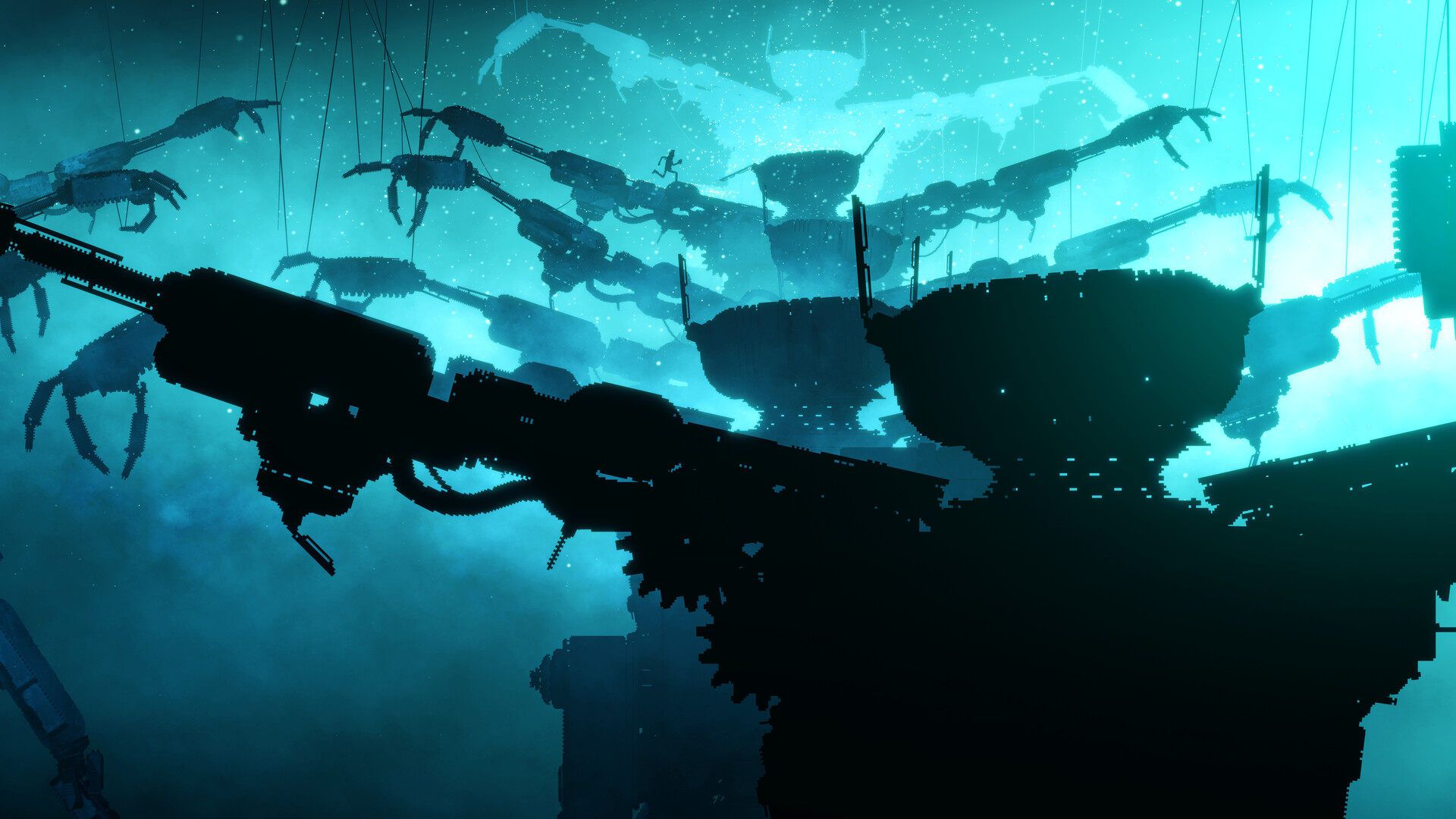
Bionic Bay releases 17 April for PlayStation 5 and PC (via Steam). Read more on the Bionic Bay website.







